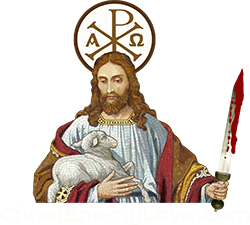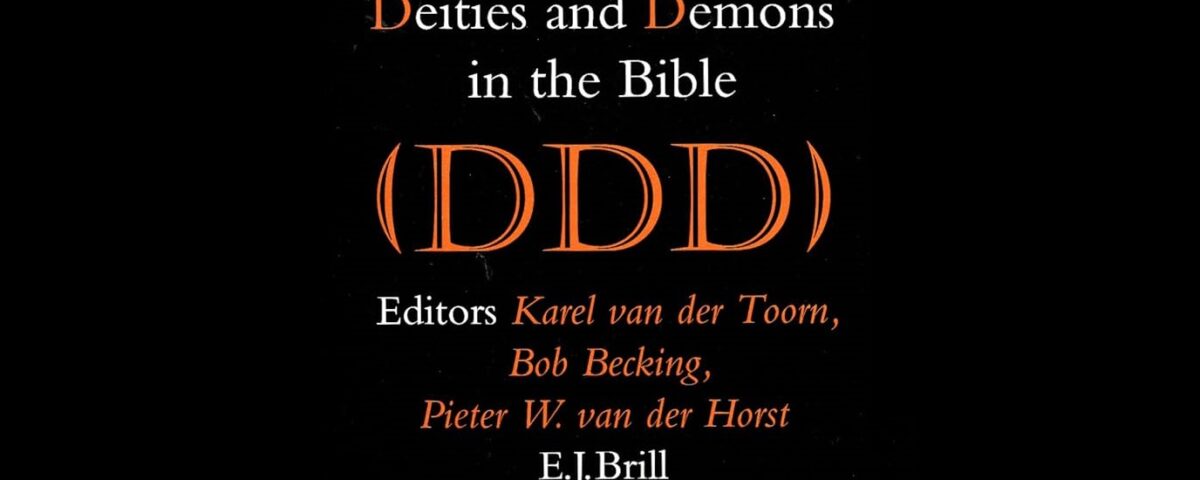Dictionary of Deities and Demons in the Bible
Not until post-Exilic times in intertestamental literature, with the rise of dualism and the concept of the Devil, did the word begin to display the meaning ‘evil demon in league with the Devil’ and take on an entirely negative connotation (e. g. 1 Cor 10:20: cf. LXX Ps 105:37).
In contrast to the gods of the upper world, these spirits were often not in human form. The shedu’s of Babylon and Assyria (cf. Deut 32:17; Ps 106:37) were depicted as winged bulls. In Isa 34:14 Lilith as a carrion bird finds a nest in the desert wastes and is joined by wild desert animals. owls and kites. Resheph is also conceived as a carrion bird (cf. LXX Deut 32:24). The Devil, ruler of the demons, is called the Serpent and Dragon (e. g., Rev 12:9), recalling the serpent in the Garden (Gen 3:1) and the Dragon in the Sea (Leviathan; Isa 27: 1). Jesus gave his disciples “authority to tread on snakes and scorpions” (Luke 10:19), referring to demons. The book of Revelation describes three demons as “unclean spirits like frogs” (Rev 16:13).
Revelation also describes the (demonic) locusts from the abyss, and as battle horses with human faces (Rev 9:7). Demons could not only attack but also indwell humans and cause many types of ills: epilepsy, insanity, disability. Against them one protected oneself by prayer, incantation and magic.
In the Bible, old meanings and associations of the terms daimon and daimonios survived alongside the post-Exilic revaluation. The original neutral sense of divinity is found in Acts 17:18, where Paul is described by pagan Athenians as a preacher of foreign deities (daimonia). The Septuagint uses daimonion several times in the ancient Near Eastern sense of the spirits of the desert: it translates the Hebrew (wild goats, satyrs, goat demons; Isa 13:21, and desert dwelling wild beasts; Isa 34:14), where desert spirits are said to inhabit cities laid waste (cf. also Bar 4:35). The book of Revelation describes the (future) fallen city of “Babylon” (= Rome) as “a dwelling place of demons and a haunt of every unclean spirit and a haunt of every unclean and hateful bird” (18:2), recalling the oracle of desert waste in Isa 13 against Mesopotamian Babylon. One of the major functions of such spirits was to bring fatal calamity: so daimon is used to designate a spirit of “famine and disease” (Sib. Or. 3.331). This inheritance explains the apparent anomaly that the main activity of demons in the New Testament ministry of Jesus is not to tempt to sin but to cause disability, disease and insanity: even though they are clearly associated with the activity of the Devil.
As the gods of the nations were demonized. so demon in the dualistic sense is found in the Septuagint (LXX) as a designation of pagan deities and spirits: in LXX Ps 95:5 the national deities of other peoples, said to be idols (‘elilim) in Hebrew, become “demons” (“All the gods of the nations are demons”); in LXX Deut 32:17, the foreign divinities whom Israel worshipped, properly described in the Hebrew text as sedim (tutelary spirits). are again called “demons” (”They sacrificed to demons and not to God”, cf. LXX Ps 105:37; Bar. 4:7); in LXX Isa 65:11 daimon renders the Hebrew name of the pagan god of Fortune (Gad), where the Israelites are said to have been “preparing a table for the demon”. This conception of table fellowship with pagan gods who are in reality demons carries over into the New Testament: Paul warns the Corinthian Church that they may not eat sacrificial meals in pagan temples, for “that which the Gentiles sacrifice, they sacrifice to demons”, meaning, for Corinth, the Greek gods Asklepios, Sarapis, and especially Demeter. So Paul sets in opposition “the table of the Lord and the table of demons” (1 Cor 10:20-21). Likewise, the author of Revelation identifies the worship of idols with the worship of demons (Rev 9:20).
In the New Testament the word daimon occurs but once (Matt 8:31). The parallel passage in Luke 8:27 uses daimonon, a word found marc than fifty times (but for Acts 17:18) for a wicked demonic spirit. Mark 5 describes the Gerasene demoniac as having an “unclean spirit”. The phrase is found 20 times in the NT (cf. also LXXZech. 13:2, of the spirit of false prophecy: T. Bell. 5.2). “Evil spirit” is used for daimonos in Luke 8:2. From these passages one learns the nature and function of demons in the New Testament era: to defile and bring to evil their human subjects and hosts. in both physical and spiritual ways. Demons sought to indwell humans and were able to do so in large numbers: the Gerasene demoniac was indwelt, as he said, by Legion, “for we are many” (Mark 5:9). Mary Magdalene was said to have been healed of seven demons (Luke 8:2; 24-26). This indwelling is described by the Biblical writers with the phrase “to have a demon” or “to be demonized”. The indwelling spirit seems nevertheless to ‘possess’ the person, speaking through and casting the sufferer about as though animating a puppet from inside (Mark 1:24: 9:26). The main effect of demons on the host in the Synoptic writers was to cause physical and mental suffering. and anti-social behavior: the violent Gerasene demoniac lives in tombs and deserted places, is periodically bound and chained. continually crying out and gashing himself with stones (Mark 5:26).
While demonization was often differentiated from debility and disease (Matt 4:24, Mark 1:32), demons also caused dumbness (Matt 9:32), blindness (Matt 12:22), deafness (Mark 9:17-29), epilepsy (Matt 17:18: lit. “being moonstruck”). and apparently fever and other diseases (Luke 4:39; 8:2). Its chief manifestation. however, was insanity: the Gerasene demoniac, when healed, is said to “be in his right mind” (Mark 5:15). So common was this idea that it was a popular calumny to claim that one with whom one disagreed was ‘insane’: so John the Baptist was slandered as demonized (= ‘insane’: Luke 7:33), as was Jesus (John 8:48; cf. 10:20 “he has a demon and is insane”). Jesus, according to the New Testament, cast demons out with a word of command (Matt 8:16: in 8:32 the word is “Go away!” He gave his disciples authority to cast out demons in his name, which they did with remarkable success for centuries (Luke 10:17; Tertullian. Apof. 23.15-18: however, cf. Mark 9:18-19). The point of exorcism in the ministry of Jesus and the early Church was not only the relief of suffering. but the clash of the Kingdom of God and the Kingdom of the Devil. This evil kingdom was conceptualized as an army organized under the Devil with ranks of officers of various levels (cf. Luke 2:18, 26: Eph 6:12). When Jesus was accused of casting out demons by their ruler Beelzebul (a name for the Devil: Baal-zebub), he replied that his mission was to “enter the strong man’s house and carry off his property” (Mark 3:27), to enter the kingdom of the Devil and rescue those who were oppressed: this he did by “binding the strong man”. which was exorcism of demons by the Spirit of God (Matt 12:28). The demons apparently recognized Jesus on sight, often shouting. “I know who you are, the holy one of God” (Mark 1:24: cf. 1:34). They seemed terrified (cf. Jas 2:19). knowing of their coming judgment and that Jesus would bring their demise: so they cried out “Have you come to destroy us?” (Mark 1:24), or. “Have you come to torment us before the time?” (Matt 8:29; cf. Matt 25:41 “the eternal fire which has been prepared for the Devil and his angels”). In Luke 8:31, the Gerasene demons entreated Jesus not to send them into the abyss. which may refer to the desert prison of the fallen angels (cf. the “pits of darkness” to which the angels are assigned in 2 Pet 2:4; also cf. Rev 9:1-11).
For Paul and the Pauline school, the battle of the two kingdoms was more clearly a battle between cosmic powers and religious loyalties. The competing gods of the Greeks arc demons (1 Cor 10:20-21; cf 1 Cor 12:2), and Christians were once under the spiritual powers of the “elements” (= the stars and signs of the Zodiac; Gal 4:3, 8-9; Col 2:8, 20; cf. T. Sol. 18.3: “the heavenly bodies, the ”world rulers of the darkness of this age”). Maybe they include the demonic “rulers of this age” who crucified Jesus in their ignorance (I Cor 2:8). Nevertheless, God disarmed the demonic rulers and authorities through Christ (Col 2:15), and Christ at his resurrection was given mastery over all angelic and demonic “rule and authority and power and dominion” (Eph 1:21; cf 1 Cor 15:24-25); so Christians one day will sit in judgment over the (evil) angels (1 Cor 6:3). The demonic forces attack the Church: such as angels, principalities (Archai), and powers try, but will fail, to separate believers from God’s love (Rom 8:38); false Christian apostles, servants of Satan, attempted to deceive the Corinthians with false doctrines (2 Cor 2:13-15); an angel of Satan even torments Paul (2 Cor 12:7); the writer of the Pastoral epistles predicts that in the last days the unwary would follow “deceitful spirits” and “doctrines of demons”, which included food taboos and the forbidding of marriage (1 Tim 4:1-3).
IV. Bibliography
G. A. BARTON, The Origin of the Names of Angels and Demons in the Extra-Canonical Apocalyptic Literature to 100 A. D., JBL 31 (1912) 156-167; W. CARR, Angels and Principalities and Background, Meaning and Development of the Pauline Phrase hai archai kai hai exousiai (Cambridge 1981); S. EITREM, Some Notes on the Demonology of the New Testament (Uppsala 1966); N. FORSYTH, The Old Enemy: Satan and the Combat Myth (Princeton 1987); *T. H. GASTER, Demon, Demonology, IDB I (1962) 817-824; T. JACOBSEN, The Treasures of Darkness: A History of Mesopotamian Religion (New Haven 1976); H. A. KELLY, Towards the Death of Saran.’ The Growth and Decline of Christian Demonology (London 1968); H. B. KUHN, The Angelology of the Non-Canonical Jewish Apocalypses, JBL 67 (1948) 217-232; *E. LANGTON, Essentials of Demonology.’ A Study of Je”,:ish and Christian Doctrine. Its Origin and Development (London 1949); J. Y. LEE, Interpreting the Demonic Powers in Pauline Thought, NT 12 (1970) 54-69; *E. C. E. OWEN…and Cognate Words, JTS 32 (1931) 133-53; H. W. F. SAGGS, The Greatness of Babylon (New York 1962) 288-314.




